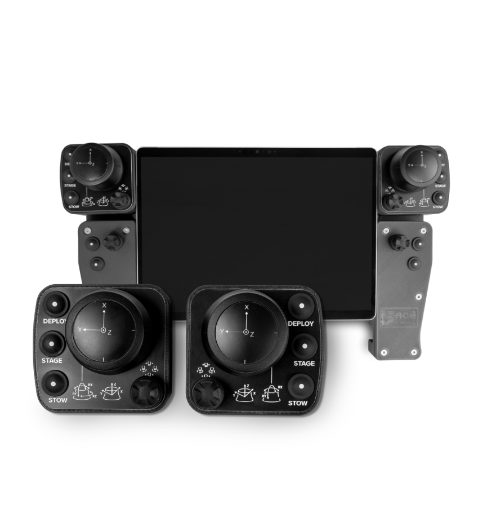Reach Robotics continues to use the Defence Global Competitiveness Grant (DGCG), awarded in late 2021, to grow our in-house verification and testing capabilities. This month, an in-house CNC machine, 3D printer, and an additional hydrostatic pressure tank have been added to Reach Robotics’ in-house facilities. This new equipment will allow for a quicker iterative design and prototyping process and enable devices to move through pressure testing without delay.
The CNC machine and composite 3D Printer are industrial grade machines capable of producing high tolerance parts with surface finishes that can seal to a depth of 1000m of water pressure. Reach Robotics will use these machines to reduce turnaround times for prototype development and low volume production from 4 weeks to 1 day. Reducing turnaround time will allow the R&D team to experiment more freely, reduce development timelines and develop their knowledge in design for manufacturing. For our production team, these machines will allow for the development of jigs, tools and fixtures to improve process control and product reliability.
The hydrostatic pressure chamber has been fabricated by an Australian supplier and can test 5 devices at a time, to a depth of 1000m. Our production line is currently bottlenecked by our hydrostatic testing facilities, and the new pressure chamber will solve this problem and provide time for our verification team to expand their lifecycle testing program. It will also serve as a redundancy measure in the event of our existing pressure chamber undergoing unscheduled maintenance.
“Being able to do more prototype manufacturing in-house through the use of the CNC and 3D printer allows a much faster iterative design process. The pressure chamber will assist in validating our new designs in larger batches.”
Luke Jackson, R&D Technician
The Defence Global Competitiveness Grant is awarded to pioneering small Australian businesses to help them invest in projects that build their defence export capability. The grant contributes to the cost of “investing in projects that build export capability to build a stronger, more sustainable and globally competitive Australian defence industry.”
A previous DGCG was used for our in-house Seaeye Falcon ROV. This allows us to conduct regular real-world testing on the type of underwater ROVs our manipulators are designed for. Read more here https://reachrobotics.com/blog/defence-global-competitiveness-grant/



Pictured: R&D Mechanical Engineer, Sebastian Restrepo uses the new CNC machine in the Reach Robotics workshop







